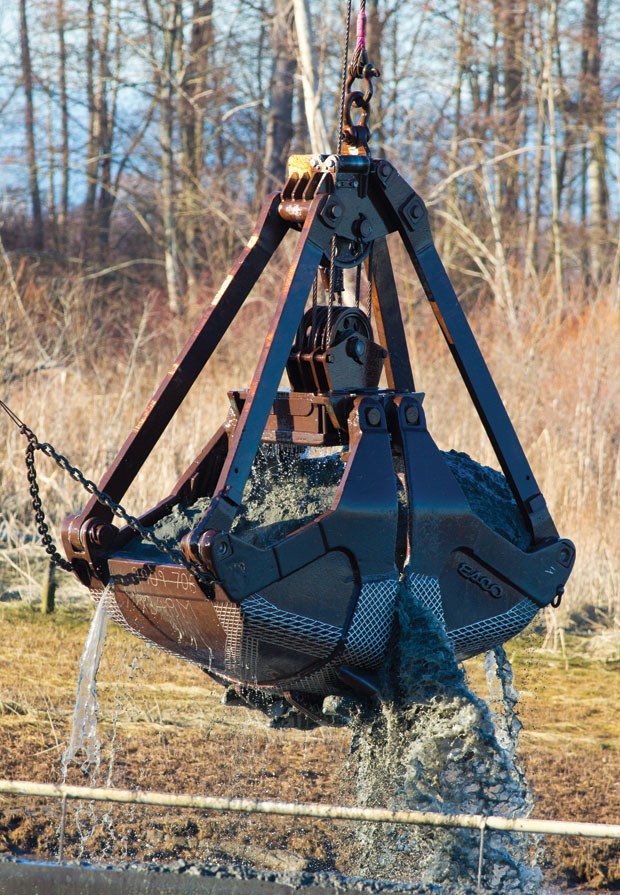Some additional dredging of local channels will occur this year thanks to money left over from a major program.
The remaining $1.5 million of a $10 million program will be directed to residual dredging.
A survey will assess sediment levels in the three main secondary channels (Seas Slough, Sea Reach and Ladner Harbour) to see how much sediment has occurred since dredging was undertaken in 2014.
From that survey, a plan will be developed focusing on “high spots” where sediment has accumulated most. Those spots are likely to be the entrance to Deas Slough, the north end of Sea Reach and Ladner Harbour Reach, civic director of human resources and corporate planning Sean McGill told Delta council last month.
It’s estimated the $1.5 million will fund the removal of approximately 25,000 cubic metres from each of the three channels. The initial dredging saw almost 370,000 cubic metres removed.
McGill said there isn’t enough money for any new channel dredging, but the hope is that it will take at least two or three years before additional dredging work is needed once the residual work is done.
As far as having the money for regular maintenance dredging, council agreed to ask the new federal government to reinstate long-term funding for the lower Fraser River.
“When this issue first came before council, we learned that elsewhere in Canada, on another coast, another major river (St. Lawrence Seaway) was being dredged and maintained. The Fraser is of equal importance to the West Coat and seems to be the neglected sibling of Canada’s major rivers,” said Coun. Sylvia Bishop.
Until 1998, dredging of all channels was a federal responsibility. In 1999, the port authority took over dredging only the main navigational channel, so silt had been building up in the secondary channels.
The volunteer Ladner Sediment Group had been lobbying for years to rectify the situation and finally saw some success with the announcement of the $10-million project to dredge the channels in Ladner and Steveston.
The material was moved by barge to Point Grey for disposal, but the federal government charged a disposal fee that impacted how much dredging could be done.
Delta is now looking for long-term funding options as there’s no designated money for further dredging.
A staff report notes the river continues to deposit sediment each year and, without regular maintenance and dredging, the channels will continue to fill in and will eventually reach a critical point when a major dredging effort will once again be required.



